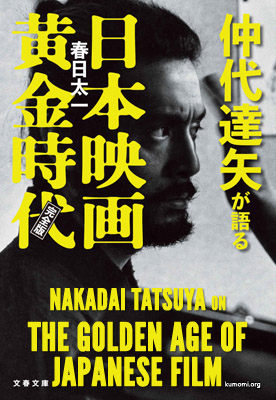On the Set of “A Duel Tale”
Text: Kasuga Taichi
“I previously did an NHK period drama called Seizaemon Zanji Tsuroku, based on a Fujisawa Shuhei novel. I played a rather indifferent, retired samurai, and people seemed to like it very much. I feel like A Duel Tale is kind of a continuation on that theme, and reading the original work, it’s quite interesting indeed. It again depicts a rather negative set of circumstances.
There are disparities among samurai, and the rank of the samurai I’m playing is that of “heyazumi,” meaning that he’s now retired and living a quiet life at home where his family consider him a nuisance. It’s a very sad story, different from the typical kind of sword fighting period drama I’ve done in the past. I feel like it was a project fitting for my age.” —Nakadai
